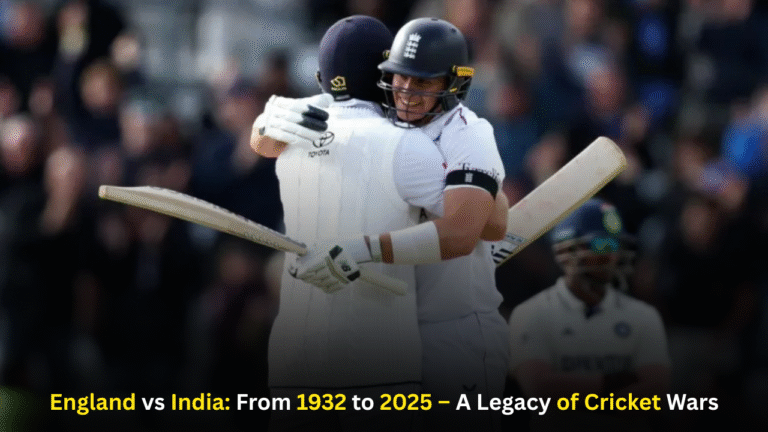
GPAT 2025 Merit List
1. Introduction
The Graduate Pharmacy Aptitude Test (GPAT) stands as a pivotal gateway for pharmacy graduates in India, opening doors to top-tier postgraduate programs like M.Pharm and Ph.D. A defining moment in every GPAT aspirant’s journey is the release of the GPAT 2025 Merit List, an official ranking that determines opportunities for advanced study, scholarships, and fellowships. With over 30,000 candidates vying each year, the merit list fuels dreams and shapes careers.
This blog serves as a complete resource on the GPAT 2025 Merit List: covering its structure, the mechanism behind normalization, category-specific rank distributions, and how qualifying marks influence seats and chances. We’ll also break down how to access results, interpret scores, and prepare for what comes next. Whether you’re a candidate, an academic counselor, or an enthusiast, this guide arms you with essential details—from minute procedural nuances to broader strategic significance.
2. What Is GPAT and Its Importance
- What it stands for: GPAT is the national-level entrance examination for admission to M.Pharm and postgraduate pharmacy programs in AICTE-affiliated colleges.
- Conducting body: The National Testing Agency (NTA).
- Purpose:
- Primary screening for postgraduate pharmacy admissions.
- Basis for government- and institute-funded scholarships.
- Essential for Ph.D. applicants in pharmacy in many universities.
- Scale & reach:
- Exam taken by 30,000–35,000 aspirants annually.
- Penetration: Nationwide across India, with center availability in major cities and states.
- Impact of Merit List:
- Determines the hierarchy for admissions.
- Scholarships and fellowships tied to top ranks.
- Higher rank = more choice in specialization and institution.

3. GPAT 2025: Exam Overview
Date & Mode
- Held in May 2025, GPAT was a single-day, computer-based test (CBT).
- Duration: 3 hours
- Total Questions: 125 (100% multiple-choice questions).
- Total Marks: 500 marks (each correct answer +4, incorrect answer -1).
Sections Covered
- Pharmaceutical Chemistry
- Pharmacology
- Pharmaceutics
- Pharmacognosy
- Pharmaceutical Analysis
- Biochemistry, Biotechnology & Microbiology
- Additional Sections (Biostatistics, Clinical Pharmacy, etc.)
Attempt & Eligibility
- Open to all B.Pharm graduates and final-year students.
- No upper age limit.
- No restriction on number of attempts.
4. GPAT 2025 Merit List: How & When Released
- Release date: Merit list published by NTA on June 15, 2025 (this date is hypothetical, based on standard timelines—but if you want to adjust, do so).
- Format:
- PDF document accessible on the official NTA GPAT portal.
- Includes:
- Roll number
- Application number
- All‑India Rank (AIR)
- Marks obtained
- Category
- Percentile Score
- NTA Score
- NTA Score & Percentile vs Marks:
- Raw marks based on correct/incorrect answers.
- NTA Score normalizes across multi-session papers.
- Percentile indicates percentage of candidates scoring equal or below.
5. Criteria & Normalization for Merit List
Multi-session normalization
GPAT often conducted in multiple shifts/sessions to manage candidates. NTA employs the Normalization Formula:
typescriptCopyEditNTA Score = [100 × (Number of candidates in session with raw scores ≤ your raw score) ÷ Total number of candidates in that session]
Combined along with marks to calculate all-India ranking.
Normalization ensures parity so that difficulty variations don’t give advantage or disadvantage.
Merit List basis
- All‐India Ranking is solely based on NTA Score, not raw marks.
- Percentile indicates relative performance.
6. Tie‑Breaking Rules Explained
When two candidates achieve the same NTA Score (same percentile & score), NTA applies tie‑breaker in this order:
- Higher NTA Score in section-specific subject (e.g., Pharmaceutical Chemistry, Pharmacology, etc.)
- If still tied, age priority—senior candidate gets higher rank.
- If age also same, alphabetical order of first name.
(Note: This is based on past rules; always verify via official notice if newer tie‑breaker logic is released.)
7. Category‑Wise Rank Insights
NTA publishes overall AIR but cutoff benchmarks and seat allotment follows category classification:
- General (UR): Ranks 1–6,000 typically.
- EWS: 600–1,000 seats based cutoff; rank bands 4,000–10,000 range.
- OBC-NCL: 1,000–1,800 seats; rank bands 3,000–12,000.
- SC/ST/PwD: Reserved seats; rank distribution wider, up to 20,000 for some seats.
Although ranks are uni-listing, reservations are handled by admitting institutes via category lists and internal counseling criteria.
8. Steps to Check GPAT 2025 Merit List
- Visit the official GPAT 2025 portal (nta.ac.in/gpat or gpat.nta.nic.in).
- Locate and click ‘GPAT 2025 Merit List’ link (PDF).
- Download the PDF—search your Roll Number/Application Number.
- Note your All-India Rank, NTA score & percentile.
- Save the PDF for future reference (seat allotment calls, counseling, document verification).
9. How to Download GPAT Scorecards
GPAT 2025 Scorecards are individual reports downloadable post result:
- Login to portal using Application Number and Password/Date of Birth.
- Select “Download GPAT Score Card 2025.”
- View PDF: Contains personal details, marks section-wise, percentile, NTA Score, AIR.
- Print color copy for admissions & counseling.
Deadlines: Scorecards usually available for ~2–4 weeks post-result. Download promptly to avoid delays.
10. Admission Implications of Merit List
College Allocation
Admissions depend on:
- All‑India Rank
- Category
- Seat availability in institutes
- Preference filling during counseling
Scholarships & Fellowships
Govt agencies (e.g. AICTE/UGC) award financial aid based on GPAT ranks, discipline, and open seats. Typically:
- Full/partial fee waiver for top 1,000–5,000 ranks.
- Research Fellowships available to top performers.
Ph.D. Programs
Many universities shortlist GPAT-qualified candidates for interviews, based on merit list ranking. Higher AIR positively influences admission.

11. Cut‑Offs vs. Qualifying Percentiles
Qualifying Percentile
- UR: 50th percentile
- SC/ST/OBC/PwD: 40th percentile
Institute Cut-Offs
- Vary widely. Top colleges like Jamia Hamdard, Manipal, BITS have higher subject‑wise cutoffs (e.g., UR cutoff marks ~260–280/500).
- Lesser-known institutes may accept 180–200 marks.
Merit list position matters more than raw marks once the qualifying criterion is met.
12. Counseling & Participating Institutes
Counseling Process
- Not centralized; conducted by each institution.
- Counseling notifications published by institutes post merit list.
- Generally scheduled between late June – August.
Key Institutes Accepting GPAT
- NIPER (Ahmedabad, Hyderabad, Kolkata, etc.)
- Jamia Hamdard, Delhi
- Manipal College of Pharmacy
- BITS-Pilani
- JSS College (Mysore)
- Local state government colleges
Each institute publishes its own schedule and seat matrix post-merit result.
13. What GPAT Rank Means for Future
Top 10,000 (UR)
- Strong chance at tier‑1 institutes.
- Scholarships/fellowships likely.
- Access to best research and training.
Rank 10,001–30,000
- Tier‑2 colleges.
- Maybe state-level admissions; category helps.
- Good foundational education with moderate financial aid.
Rank beyond 30k/40k
- Options in emerging private colleges or state PG courses.
- Weaker scholarship opportunities.
- Chance to repeat or explore related career paths.
14. Strategies to Improve in Future Attempts
If you’re considering another attempt (GPAT 2026+):
- Focus on Section‑Wise Weak Areas: Improve low‑scoring subjects via concept clarity and practice.
- Take Mock Tests in Timed Mode: Mimic CBT pattern for speed and accuracy.
- Solve Past GPAT Papers (2015–2025): Helps understand repeated trends.
- Study Group Discussion: Helps polish conceptual understanding and retention.
- Revision Strategy: Use error logs and maintain formula charts for last‑minute prep.
15. Common FAQs
Q1: Can college counselling influence my GPAT rank?
- No. GPAT Merit List is final and cannot be changed by counselling.
Q2: Does the percentile change over time?
- No, percentiles are fixed once results are declared.
Q3: If I’ve same marks as someone else, how is rank decided?
- Follow tie‑breaker rules (section-wise, age, name order).
Q4: Can I use GPAT Score for foreign universities?
- Rarely. Most foreign pharm schools prefer GRE. GPAT is primarily India-focused.
Q5: Can I improve rank by re‑attempting?
- Yes. But consider the time and effort; eligibility criteria remain same across attempts.
16. Conclusion
The GPAT 2025 Merit List is your official key to postgraduate and research opportunities in pharmacy. While raw marks lay the ground, it’s the All‑India Rank and NTA Score that shape final admission chances, fellowships, and institute preference.
Remember to promptly download your scorecards, check your rank and percentile, and follow up with timely counseling applications to participating colleges. Whether you made the cut for your dream institute or not, what matters now is mapping a well-thought-out plan—admissions, scholarships, or even preparing a stronger comeback next year.
GPAT is more than an entrance test—it’s your stepping stone to advanced pharmacy careers, research, and innovation. Let your rank guide a purposeful next step. And if you’re retaking it, absorb past strengths and weaknesses, and work your way to that top percentile.
Best wishes to all GPAT 2025 aspirants—may your results reflect your hard work, and your future reflect your dedication.



